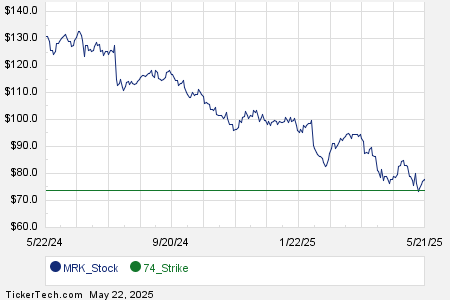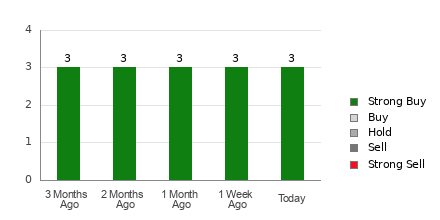New Options for Merck: Analyzing Puts and Calls
Today, Merck & Co Inc (Symbol: MRK) has introduced new options contracts expiring on July 3rd. Our analysis has identified noteworthy put and call contracts in the MRK options chain.
Put Contract Insight
The put contract at a $73.00 strike price currently has a bid of $1.63. Selling to open this put means the investor commits to purchase MRK shares at $73.00 while also collecting the premium. This results in a cost basis of $71.37, which is appealing compared to the current share price of $77.40.
This $73.00 strike represents a roughly 6% discount from the current trading price, positioning it as out-of-the-money by that percentage. Current analytical data indicates a 70% probability that this put contract may expire worthless. Our platform will track these odds over time, providing ongoing insights. Should the contract expire worthless, the premium translates to a 2.23% return on cash commitment, or an annualized rate of 19.40%—what we term a YieldBoost.
Price History Chart
Below is a chart showing the trailing twelve-month trading history for Merck & Co Inc, with the $73.00 strike indicated in green:

Call Contract Analysis
On the calls side, the $78.00 strike contract has a current bid of $1.26. An investor who purchases shares at the current price of $77.40 and sells to open this call would be committing to sell the stock at $78.00. By collecting the premium, the total return—excluding dividends—would be 2.40% if the stock is called away by July 3rd.
However, potential gains could be limited if MRK shares increase significantly. Therefore, analyzing the trailing twelve-month trading history and understanding the fundamentals of the business is crucial. Below is a chart reflecting MRK’s trading history, with the $78.00 strike highlighted in red:

Market Considerations
The $78.00 strike is approximately a 1% premium over the current trading price, making it out-of-the-money by that percentage. There is a 52% chance this covered call contract may expire worthless, allowing the investor to retain both the shares and the collected premium. Should this happen, the premium would provide a 1.63% extra return, or 14.15% annualized, which also qualifies as a YieldBoost.
Implied volatility for the put example stands at 36%, while the call’s implied volatility is 30%. Based on the last 250 trading days, the actual trailing twelve-month volatility calculates to 28%. For additional put and call options ideas, visit StockOptionsChannel.com.
![]() Top YieldBoost Calls of the Dow »
Top YieldBoost Calls of the Dow »
Additional Context:
- GLNG YTD Return
- SILC Videos
- Funds Holding MFV
The views and opinions expressed herein are those of the author and do not necessarily reflect those of Nasdaq, Inc.







